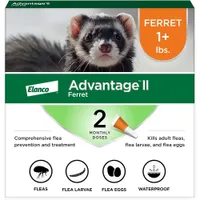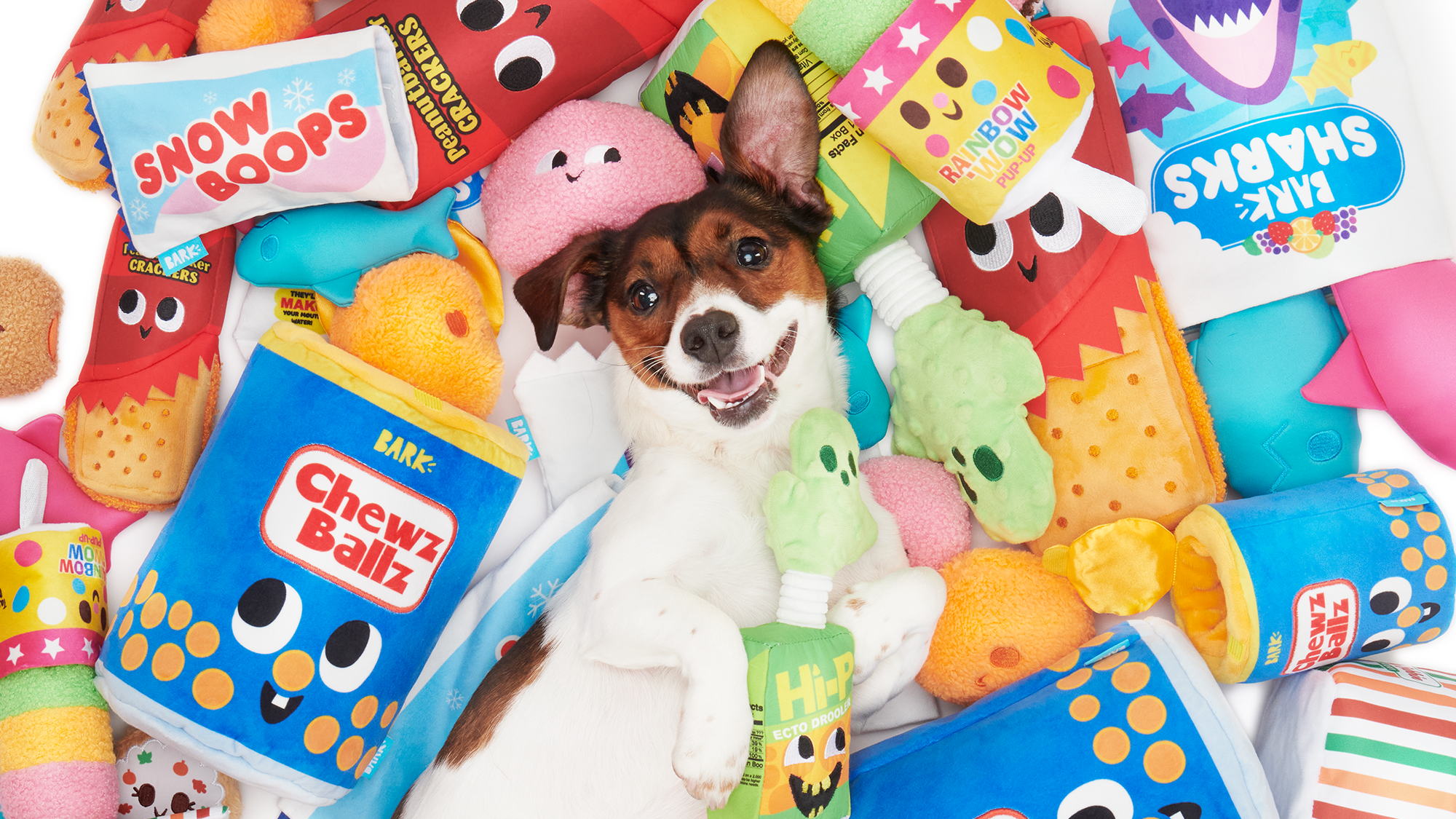How to get rid of fleas on rabbits
Vet reveals how to get rid of fleas on rabbits (and thankfully, it's fairly straightforward!)
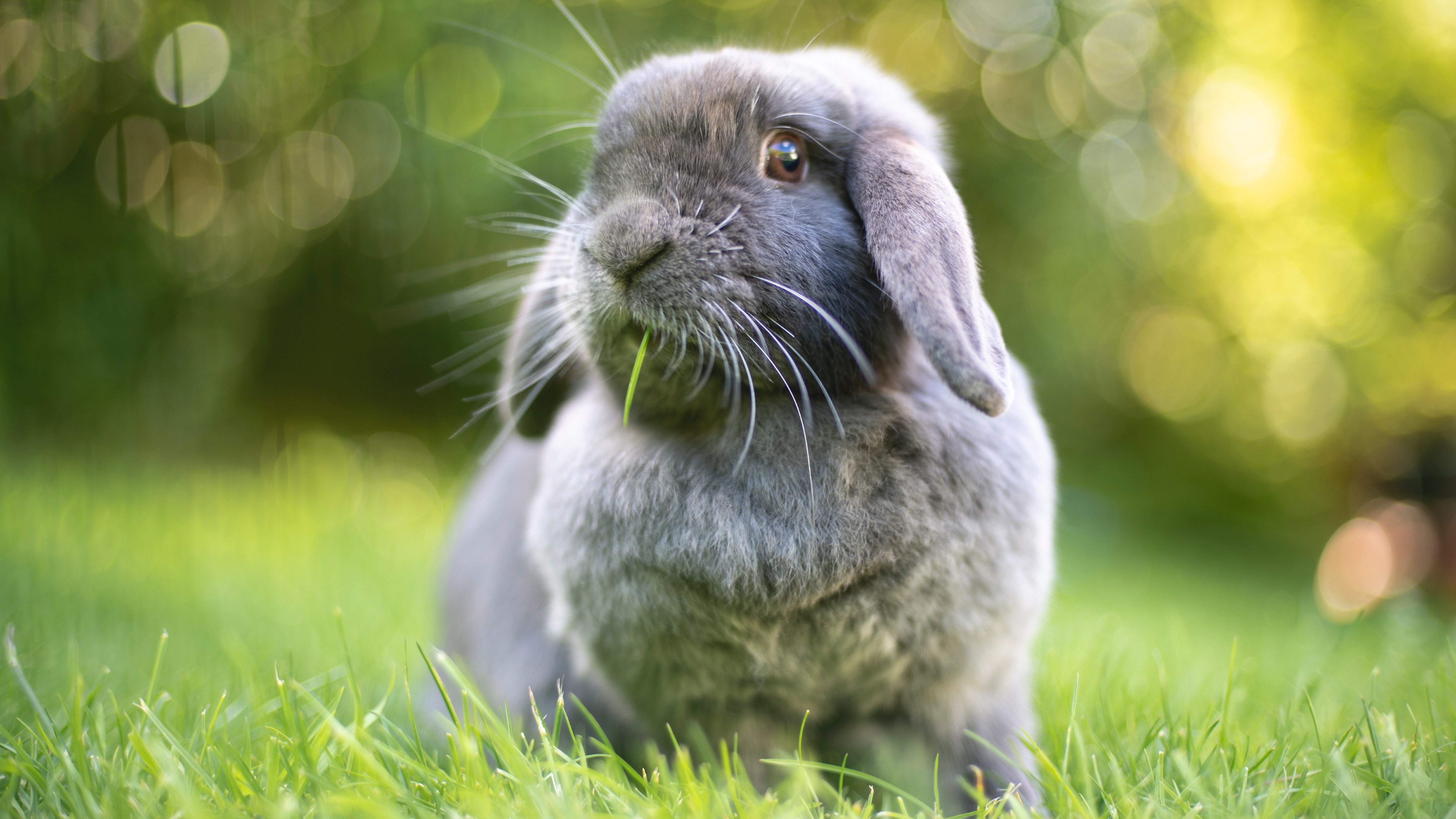
Wondering how to get rid of fleas on rabbits? When we think about pesky parasites, it's often dogs and cats that first spring to mind, but believe it or not, small pets can be affected too.
When you first welcomed your floppy-eared friend into your family, your mind was likely occupied with thoughts of purchasing one of the best indoor rabbit hutches, as well as food and toys for your new bunny.
However, now that your rabbit is an established member of your household, your thoughts may have turned to how to ensure they stay in peak physical health. If so, you may be curious about whether rabbits can get fleas.
The good news is that fleas on rabbits are rare – however, they can happen in multi-pet homes where your bunny may be spending time with dogs or cats. With that in mind, we consulted expert vet Dr Rebecca MacMillan to find out more about how rabbits get fleas, the signs to be on the lookout for, and what you can do to prevent them.
How do rabbits get fleas?
Did you know that, unlike dogs and cats, it's actually really unusual for rabbits to get fleas? It's true!
"I rarely find fleas on the pet rabbits I see in my clinic," Dr MacMillan confirms. "Flea problems are uncommon but if your bunny is affected then it is likely that they have been caught from a cat or a dog within the household. Outdoor rabbits could also potentially catch them from contact with wild rabbits or from flea pupae that were lying in wait in the grass."
When it comes to our top tips for indoor rabbit owners, getting your bunny vaccinated is something we really recommend as this will help protect them against the many issues that fleas can cause.
Get the best advice, tips and top tech for your beloved Pets
"Though flea problems are not often seen, it is worth knowing that fleas can be a real health hazard, transmitting myxomatosis. Vaccination will help to protect your rabbit against this fatal illness," says Dr MacMillan.
How would I know if my rabbit has fleas?
Has my rabbit got fleas? It's a question you may be asking, especially if your bunny is part of a multi-pet household that includes dogs or cats. Dr MacMillan reveals the signs you want to be on the lookout for:
"Excessive scratching and overgrooming could indicate fleas. This could include nibbling at themselves more than usual resulting in patches of fur loss or thinning.
You might see small bits of flea dirt (poo) in their coat. This will appear like black or brown specks in their fur. Get some of this dirt and gently rub it onto some damp cotton wool or paper towel. If it leaves a reddish-brown smudge, then this is digested blood and a sure sign that your rabbit has fleas. In some cases, you may also see the fleas themselves running through your rabbit’s coat. These parasites will be small, shiny, brown, and wingless.
If your rabbit has a heavy infestation they may be suffering from anemia, due to blood loss. Anemic rabbits will be weak, subdued, and have pale gums."
However, Dr MacMillan also states that some rabbits may show no signs of fleas at all, which is why conducting regular checks of your bunny's coat is recommended. Check out our guide to rabbit grooming for advice on how to do this.
How do I get rid of fleas on a rabbit?
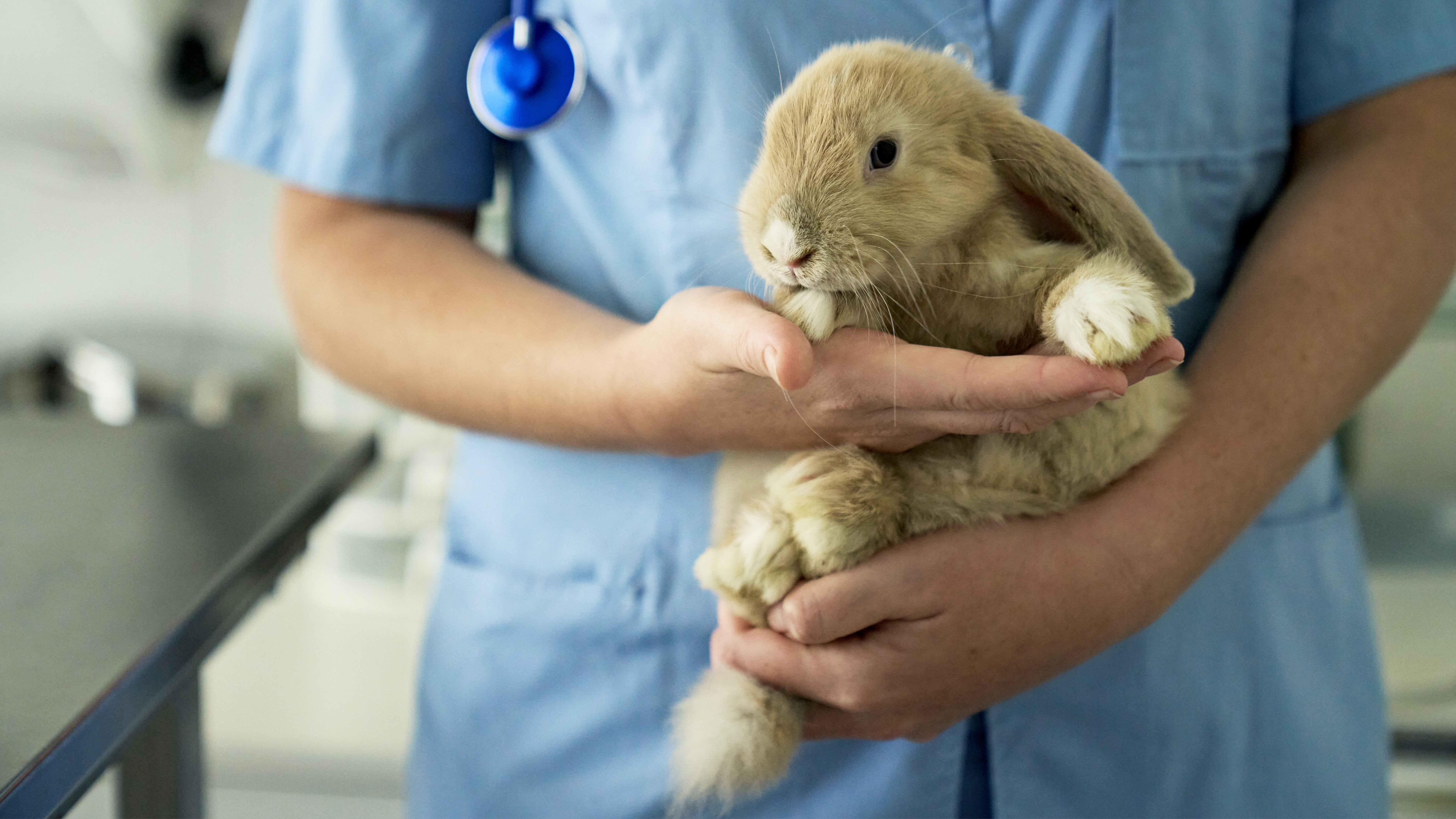
As a responsible rabbit owner, you may be wondering if you need to regularly flea your floppy-eared friend like you would a dog or cat. But according to Dr MacMillan, this typically isn't necessary.
"Most rabbits don’t require routine flea treatment because flea issues are not common. So, it’s unnecessary to use preventative products on healthy rabbits. Treatment is only usually required if you see fleas on your bunny."
In these instances where you have found fleas on your rabbit, speak to your vet who will be able to advise you on an appropriate course of action. They will likely give you a prescription product that can be used to treat and clear the infestation.
What flea treatment can I use on a rabbit?
If you have dogs or cats in your home, it can be very tempting to apply the same flea treatment to your rabbit that you'd use on your other fur friends. After all, if you're anything like us, you may be thinking that flea treatments are flea treatments, right? Wrong. We were surprised to learn that an ingredient contained in many cat and dog flea treatments is actually highly toxic to rabbits.
"A common active ingredient found in many cat and dog anti-flea products is fipronil. While fipronil is safe for our other pets, it is toxic for rabbits," explains Dr MacMillan.
"If you have treated your cat or dog with a fipronil-based product then be sure to keep them away from your rabbit for several days afterwards. Never use a product on your rabbit unless you are certain it is safe, speak with your vet if you are unsure."
So, if using fipronil-based products is out, are there any safe alternatives that you can use at home to keep fleas at bay? You'll be relieved to hear that there are safe options available for treating fleas on rabbits.
"There are flea products available that are safe for use on rabbits," confirms Dr MacMillan. "These usually come in the form of a spot-on treatment that you apply topically such as imidacloprid (Advantage) or selamectin (Revolution/Stronghold). Flea shampoos or dips are not usually recommended. It is always best to speak to your vet for advice, as they will be able to direct you towards a safe and effective product."
Advantage II Flea Treatment | Amazon
This spot-on treatment is not toxic to rabbits, but it’s always wide to check with your vet before using.
How to prevent fleas on rabbits
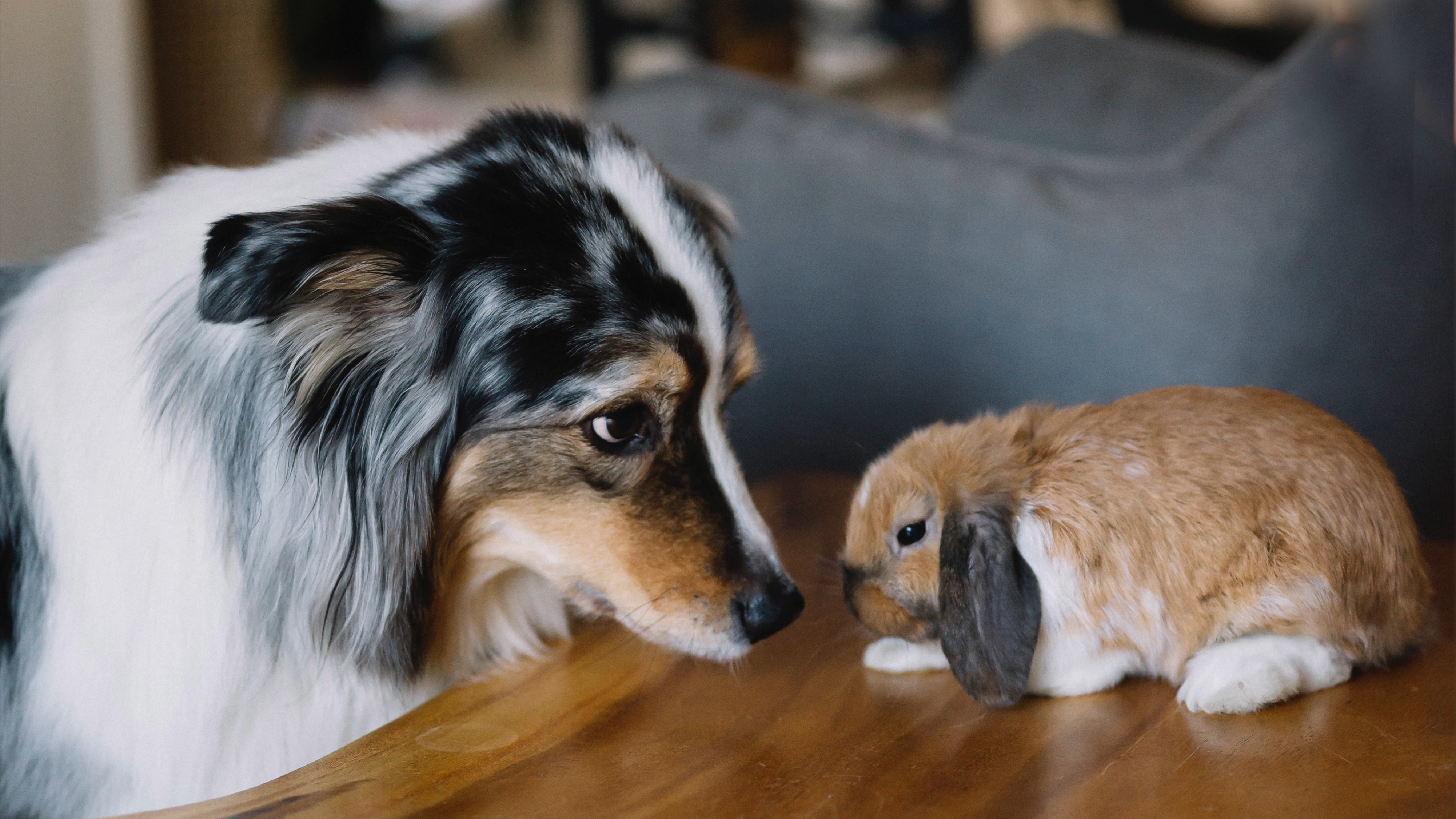
As with all things, prevention is always better than cure when it comes to fleas. When it comes to caring for a house rabbit, Dr MacMillan says that one of the most important things you're going to want to be doing on a regular basis is ensuring that you regularly apply a topical flea treatment to any dogs or cats that are a part of your family. Here are round-ups of our best flea treatments for dogs and best flea treatments for cats.
"In my experience, the best thing you can do to protect your rabbit is to make sure that any cats and dogs that live in your household are covered with an anti-parasite product (choose one that doesn’t contain fipronil). This will help to avoid bringing a flea problem into your home in the first place, which is the most common route of transmission."
If any of your other pets are currently being treated for a flea infestation, we also recommend you wash all of their bedding once a week and pop it in the dryer afterward if you have one as the heat will help to kill any pests hidden in the fabric.
Vacuuming your house (including hardwood floors) on a daily basis can also help to remove flea eggs — just be sure to empty the canister into an outdoor garbage can when you've finished.
Looking for more great content like this? Our vet explains what to feed a rabbit and how to keep a rabbit cool in the summer
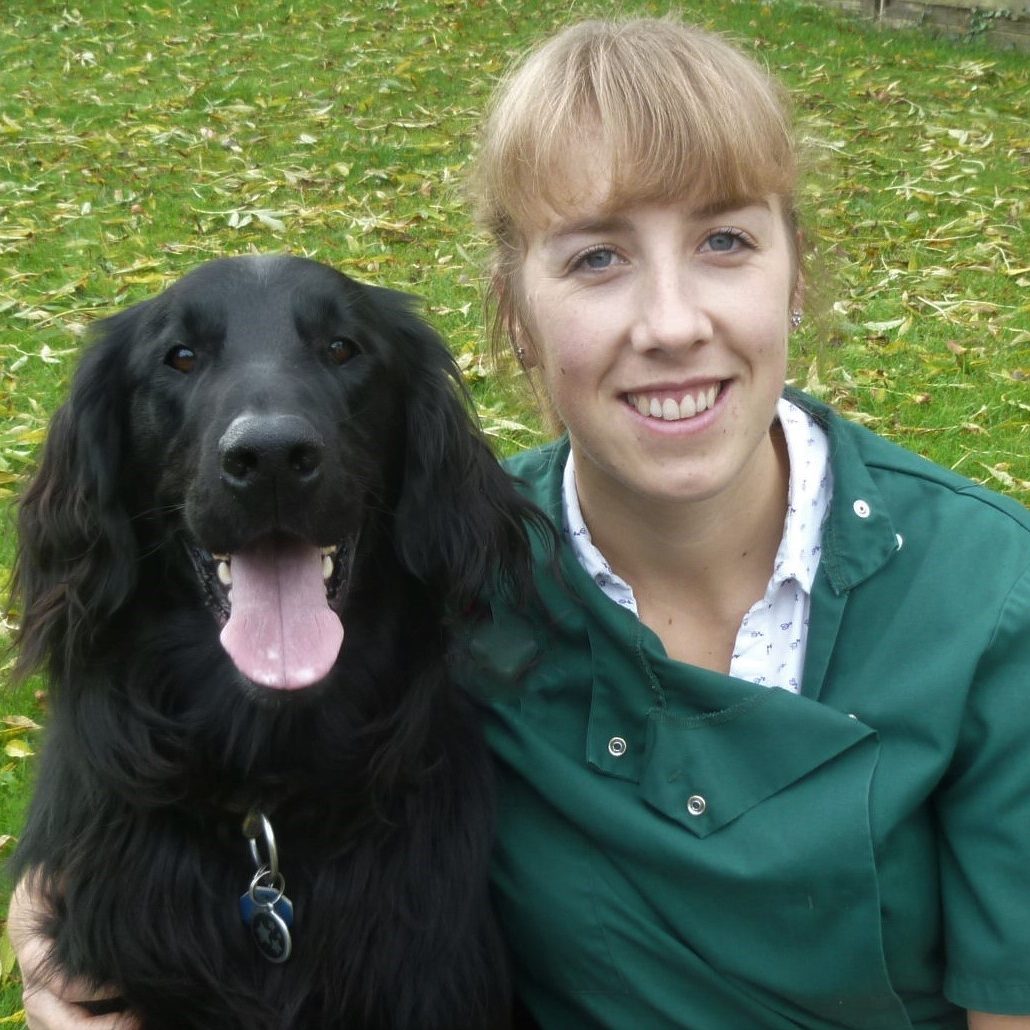
Rebecca is a vet surgeon who graduated from the Royal Veterinary College in 2009. She has a wealth of experience in first opinion small animal practice, having done a mixture of day-to-day routine work, on-call emergency duties and managerial roles over the years. She enjoys medicine in particular and she is proud to have recently achieved a BSAVA postgraduate certificate in small animal medicine (with commendation). She writes on various feline and canine topics, including behavior, nutrition, and health. Outside of work and writing she enjoys walking her own dog, spending time with her young family and baking!

Kathryn is a freelance writer who has been a member of the PetsRadar family since it launched in 2020. Highly experienced in her field, she's driven by a desire to provide pet parents with accurate, timely, and informative content that enables them to provide their fur friends with everything they need to thrive.
Kathryn works closely with vets and trainers to ensure all articles offer the most up-to-date information across a range of pet-related fields, from insights into health and behavior issues to tips on products and training.
When she’s not busy crafting the perfect sentence for her features, buying guides and news pieces, she can be found hanging out with her family (which includes one super sassy cat and a kitten), drinking copious amounts of Jasmine tea and reading all the books.
She has written for a range of publications, including Fit&Well, Top Ten Reviews, LiveScience, Goodto, and Product Hunt.
